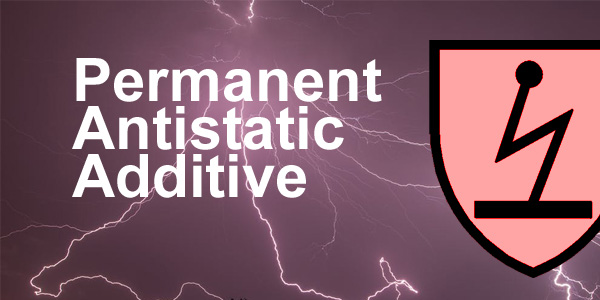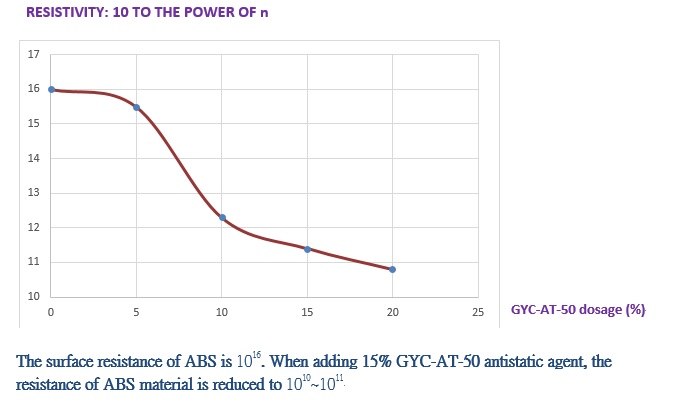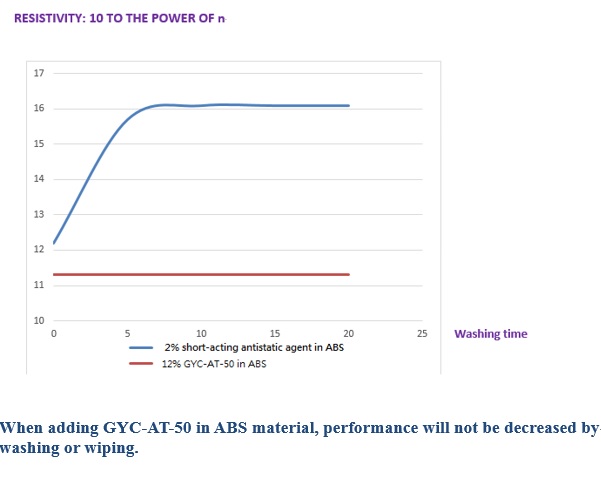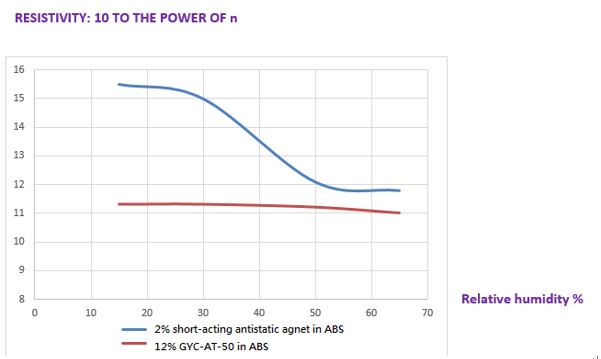
Intro
Plastics have good process-ability, light weight, fine chemical resistance, which make them ideal for extensive applications. However, plastic products easily fall prone to buildup of static electricity from friction, causing abnormal discharge that can sabotage electronic parts, or dust attraction onto products.
Average anti-static agent in the market, yet, can be affected by environmentand exterior forces, thus reduce the performance. Therefore, GYC GROUP R&D team developed the evolutionary GYC-AT-50, a nano high molecularweight anti-static additive.
It can be applied to various engineering plastic, like Nylon (Polyamide, PA) 、ABS, PBT and other alloy materials. GYC-AT-50 has excellent anti-static performance that will not be decreased by temperature and humidity; furthermore, it can maintain in the products even after washing and wet wiping. As a water-resistant long-acting anti-static agent, GYC-AT-50 can apply to masterbatch, blowing, extrusion
Features
Efficiently reduce resistivity
Long-acting anti-static effect
Performance will not be decreased by wiping or exterior friction
Good compatability with various general and engineering plastic.
Excellent dispersing ability
Pellet form, will not produce dust pollution
Reduce state charge of products, prevent electric shock
Using in the shell of electronic products to protect the electronic circuit
Increase added-value of products
Performance will not be decreased by wiping or exterior friction
Resistant to water. Can still eliminate the buildup of static electricity
Suitable for extruder and injection molding machine
Can be kneaded with general and engineering plastic、pigment and filler
【Distinct Working Mechanism of Nano High-Molecular Antistatic】
|
GYC-AT-50 Nano high-molecular anti-static Working Mechanism |
|
Short-life low-molecular anti-static Working Mechanism |
|
GYC-AT-50 can be averagely compounded in plastic/resin, forming a network that allows electric charge to conduct from layer to layer without being removed by washing or wiping. |
Common anti-static agent forms hydrophilic layer at surface to release static charge from polymer through moisture in air but easily lose performance when met by humidity, external friction. There is also likely migration happening, so it was viewed short-term. |
|
 |
||
【Anti-Static Efficiency of GYC-AT-50】

【Comparison between GYC-AT-50 and short-acting antistatic agent】

【Comparison between GYC-AT-50 and short-acting antistatic agent which are affected by relative humidity 】

Properties
| Color | Light-yellow |
| Appearance | Pellet |
| Antistatic type | Nano-polymer type |
| Melting Point | 205±2 ℃ |
| Thermal Decomposition Temperature | 300℃ |
Applications
NYLON (Polyamide, PA):PA6、PA66、PA11、PA12
ABS、PBT engineering plastic
HIPS
PC/ABS alloy
Antistatic masterbatch
Various of blowing, extrusion, and injection products
Appliance shell, car dashboard, panel cover, car interior materials
IC electronic components, electronic circuit protection
Anti-static film, sheet, container, packing materials
Dosage
10%~15%, suggested by GYC Techenical Department. Users can adjust it depends on target level, formula, and material characteristics.
Packing
25KG/ bag
Storage